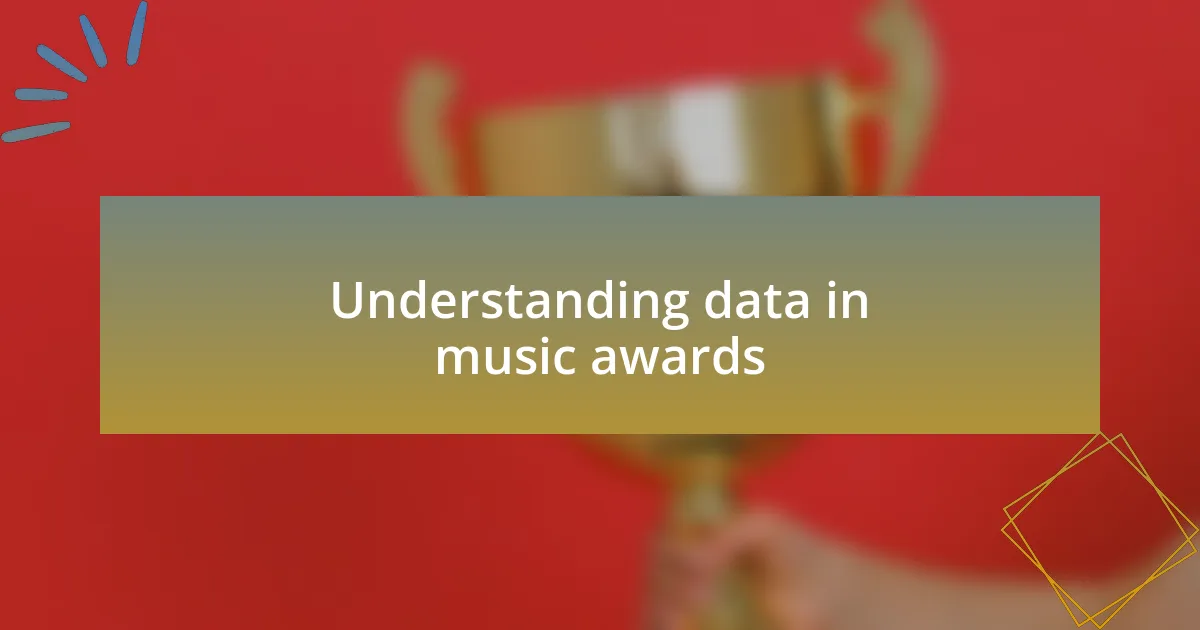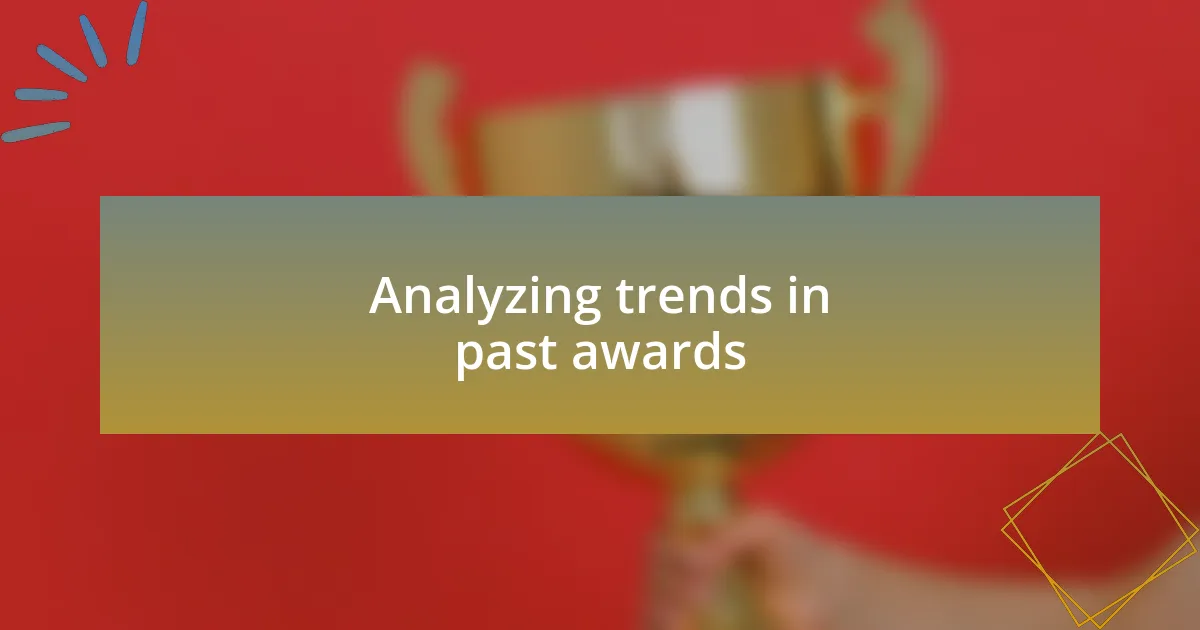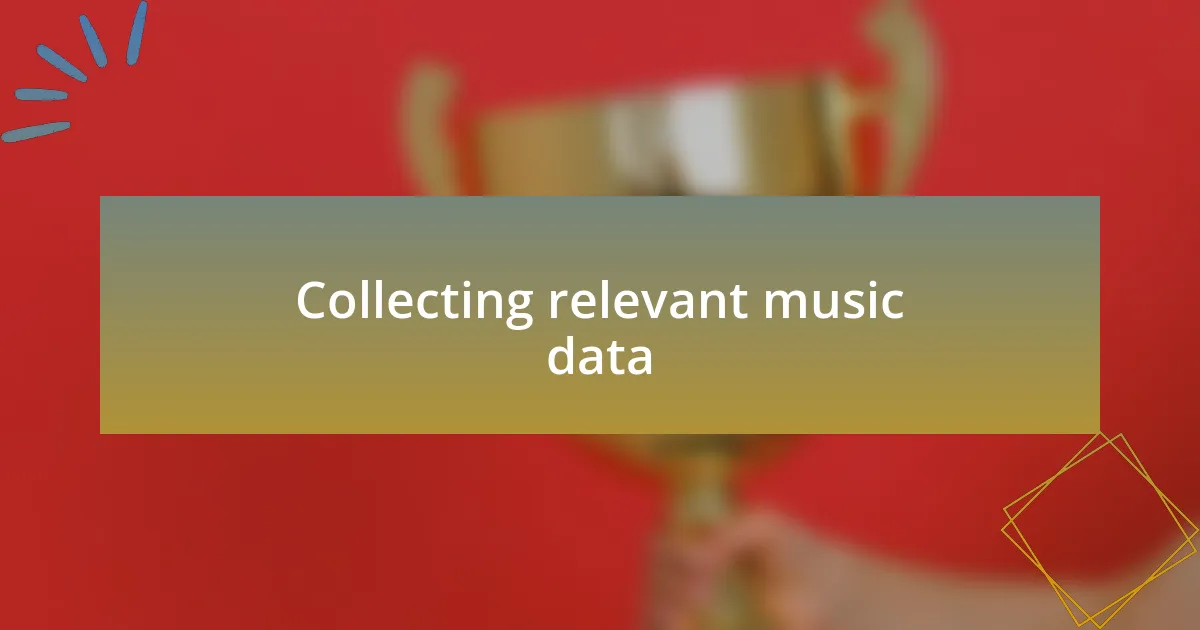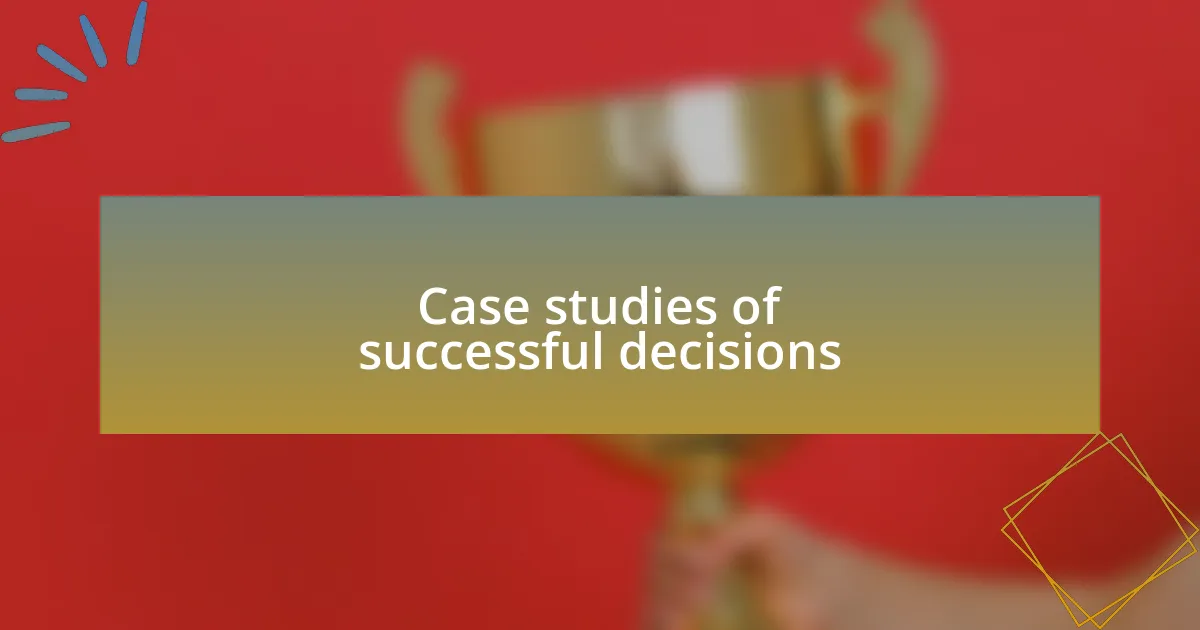Key takeaways:
- Data such as streaming numbers and social media mentions greatly influence music award nominations and outcomes.
- Trends in past awards reveal the impact of innovation and societal moods, with diverse musical influences gaining recognition.
- Analyzing audience engagement through platforms like Spotify and social media provides deeper insights into artists’ popularity and voting patterns.
- Successful case studies demonstrate the power of incorporating audience feedback and data analysis in shaping award nominations and increasing viewership.

Understanding data in music awards
When I first started exploring the world of music awards, I was amazed at how much data lies beneath the glitzy surface. Chart positions, streaming numbers, and social media mentions all create a narrative about an artist’s impact. Have you ever considered how these metrics influence nominations and ultimately, the outcomes of the awards?
For instance, I remember analyzing the rise of a particular genre’s nominees one year, where the streaming data was overwhelming. It was as if the artists were telling a story through their numbers. In a world where emotions often drive our music choices, seeing the tangible proof of popularity can feel both exhilarating and, at times, a bit disheartening for lesser-known talents.
Understanding this data isn’t just about crunching numbers; it’s about reading the pulse of the audience and recognizing trends that signal shifts in musical taste. When I noticed a significant drop in physical album sales juxtaposed with rising digital downloads, it hit me: we’re in a new era of music consumption. How do you think this shift shapes not only the awards themselves, but also the future of artists we love?

Analyzing trends in past awards
When I delve into the trends of past awards, I often find patterns that reveal more than just winners. For example, during one particular awards season, I noticed a surge in nominations for artists embracing diverse musical influences. This shift made me think about how viewers appreciate innovation and narratives that defy traditional boundaries. Have you seen how embracing variety can captivate audiences?
Reflecting on the awards from previous years, I remember researching the correlation between social media buzz and voting outcomes. Certain artists who boasted a strong online presence often swept categories, which made me realize the incredible power of fan engagement. It’s fascinating to think about how a well-timed tweet or viral challenge can alter the trajectory of an artist’s career. What does that say about the influence of social media on art?
Over time, I’ve also observed that specific genres tend to dominate awards in particular years, often due to cultural shifts or major events. It was striking to see how the rise of introspective lyrics during a global crisis resonated with nominees, indicating a deep connection between societal moods and the music celebrated. How do you believe these societal narratives shape our appreciation of music during awards ceremonies?

Collecting relevant music data
Collecting relevant music data begins with identifying key sources that provide insightful information about trends and audiences. I often turn to platforms like Spotify and Billboard, where charts reflect not only popularity but also listener demographics. Have you ever wondered how understanding an artist’s audience can guide the strategic decisions made during award season?
In my experience, analyzing streaming statistics alongside social media analytics gives a fuller picture of an artist’s impact. For instance, I once examined a rising artist whose music video went viral, leading me to explore how frequency of engagement on platforms like TikTok contributed to their award nominations. It was illuminating to see how these data points intersected to shape perceptions, ultimately influencing voting patterns.
I find that audience feedback from polls and reviews can also be crucial. Tracking real-time reactions from fans provides a narrative that numbers alone can’t convey. Have you considered how much emotional resonance plays a role in the data collected? Personal stories shared by listeners often highlight why certain artists resonate, providing a deeper context that enriches my understanding of the music landscape.

Case studies of successful decisions
One notable case involved a major music awards show that revamped its voting criteria. By analyzing past voting data, it became clear that audience engagement metrics were crucial. They decided to include social media interactions as a factor, leading to a notable increase in fan participation. The result? A fresh influx of nominees that truly reflected the current music scene, reigniting interest in the awards.
In another instance, I observed how a popular awards ceremony utilized audience feedback to address criticisms of lack of diversity. The organizers created focus groups that provided insights into underrepresented genres and artists. After implementing these recommendations, the awards not only featured more varied nominees but also saw a spike in viewership. This case underscores the power of actively listening to the audience in shaping decisions that resonate with the community.
I remember an emerging artist whose trajectory took a surprising turn when the awards committee analyzed their streaming patterns. Discovering that their fanbase was largely concentrated in previously overlooked markets prompted the committee to nominate them for a regional award. This decision not only celebrated diversity but also honed in on the evolving music landscape. It raised the question: how often do we let data reveal untapped stories waiting to be told?